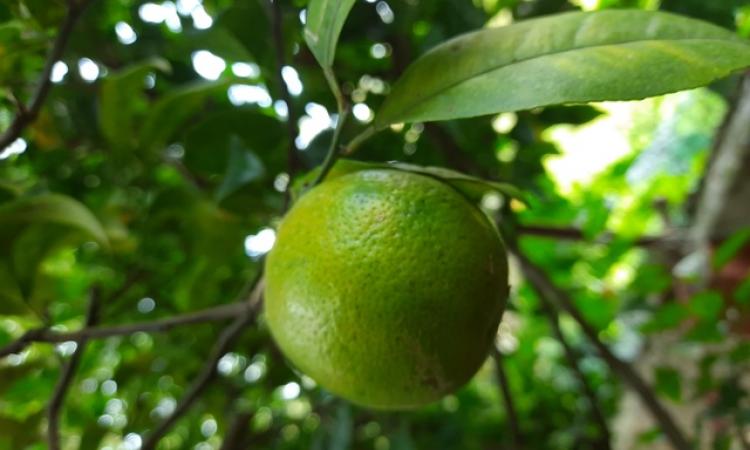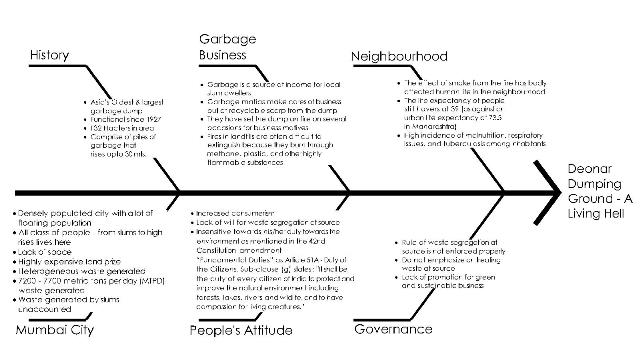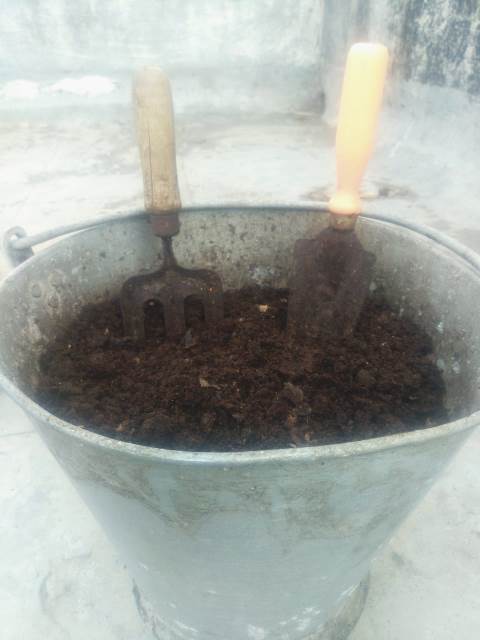
My cracked heels seemed to be incurable no matter how much they were treated, until the lockdown happened! It came with a new norm - Stay home, stay safe. And it gave me my original feet back! This unexpected delight came with a realisation that my body was healing, and so was Mother Earth, during the lockdown!
Nature started to reclaim itself during the lockdown. Rivers started to get clean as all the industries responsible for pollution were closed. The air quality index was improving. But this was bound to be short lived as the world got back on its feet .
Our mother earth is not the same as she used to be many years ago because of the un-thoughtful actions of humans coupled with the impacts of climate change. Wild fire, melting glaciers, floods, drying waters, poor crops, greenhouse gases, air, water and soil pollution, heat waves, disturbed ecology, disturbed weather patterns are new appearances of nature. A collective and cascading effect of all this is posing a major threat to human health and survival.
It is known that our forefathers were foragers. The biggest revolution in the history of mankind was farming. But modern day farming has changed drastically due to the ever growing demand for food and changes in weather patterns. Use of chemical fertilisers, insecticides, pesticides to increase crop production have aggravated the problem and created a detrimental impact on nature as well as on humans. This has resulted in reduced soil fertility and contaminated ground water levels, further magnifying the problem. Attack of invasive weeds and pests on food - which in turn have increased the use of insecticides and pesticides have not only led to deterioration of food quality, soil, but also led to farm distress and suicides.
This is the price we are paying for viewing land as a commodity with urban lifestyles being increasingly linked to consumerism! And nowhere is this consumerism more obvious than in our ever growing cities.
"We abuse land because we regard it as a commodity belonging to us. When we see land as a community to which we belong, we may begin to use it with love and respect"
-Aldo Leopold, The Sand County Almanac.
Urban Mumbai and the waste conundrum
Urban Mumbai with a population of 1.264 crores (Census Department of India, 2011) generates approximately 7200 - 7700 metric tons of waste per day (MTPD) that is transported daily by municipal and private vehicles in 1720 trips/day to the dumping grounds.
Deonar Dumping Ground - A Living Hell!
Unfathomable tons of garbage is generated in Mumbai which is dumped at Deonar making it a living hell for people staying in its vicinity. The Fishbone Diagram below explains different factors that make this dumping ground a living hell.

So what can we do?
The need of the hour is to think about recycling waste that we generate at the source itself so that we avoid sending it to the landfills. One of the ways of doing that is Wet Waste Composting. Nature has given us this process in which we can easily convert the food waste into this wonderful product known as Compost (also known as Black Gold).. Composting works wonders for the soil by enhancing its nutritional value and productive capacity
My Composting Spur
I decided to take up on composting in June 2019. But this did not just happen overnight. While I was doing my masters in Environmental Architecture, it was then that I read about composting. I am a nature lover and the very fact that biodegradable waste can be naturally converted into such a useful and valuable wealth - compost fascinated me. My journey began by reading some of the articles and watching some videos on DIY composting on Google. It helped me immensely to understand the process in detail and how to go about it.
To begin with, I started with about 200 grams of kitchen waste (known as greens) in a small unused earthen pot, to which I added a few dried leaves (known as browns) procured from my building compound. Within a few days, it started giving results. I was delighted. It was encouraging. Gradually, I started adding more to the pot thus increasing the quantity to the compost.
We are a family of 5 members and we roughly generate about 500 - 600 grams of waste per day. As the quantities of waste increased, so did my compost. I solved this problem by using unused plastic containers and buckets from my own house I was able to generate compost at no input cost at all!
My Learning about Composting
Composting is not a rocket science. It is very simple, but learning the process of composting needs practice with patience, commitment and determination.
- Ratio of Greens and Browns:
To begin with, the composting process needs a kick start by adding greens (which is kitchen wet waste) with browns (such as dried leaves, paper, cardboards, sawdust etc). Initially I started the process by mixing the greens and browns in the ratio of 2:1. In the beginning I used dried leaves and tissue paper as brown (never used newspapers as it has got ink prints). Eventually I realised that leaves by itself take a little more time to decompose. So although the kitchen waste did convert into compost, few bigger pieces of dried leaves could still be seen within. Also the process took a little more time. As an alternative, I thought of using sawdust instead. And I was extremely delighted with the results. The rich earthy aroma, the earthy brown color and soft cotton like feel of the compost was worth it. I sourced the saw dust (which has to be of pure wood) from a local timber saw mill at a very reasonable price.
- Rectifying the Ratio:
Over a period of time, I realised that there is no fixed ratio of greens and browns. Of course, to begin with certain proportion needs to be considered. However, after 1-2 days of adding the mix inside the compost bin we get to see what's happening within. In case the mixture looks wet we need to add more browns. In case it looks dry we need to add some water. The water content in the mix depends on two main factors: - the type of waste that goes into the bin and season.
Type of waste - in case of waste which has got more water content such as watermelon skin, rotten oranges or tomatoes etc., the mixture becomes soggy (the sogginess aggravates during monsoon)
Seasons - during summers, the bin tends to become dry, during winter the process becomes slow and during monsoons the bin become too wet. The water that leaches out of the bin is also nutritious and can be used as a liquid fertilizer. However, dealing with this liquid during monsoon is a big challenge (This is in context of approximately 17kgs. of waste being naturally composted over a period of 1 month).
- Mixing the ingredients:
Every new waste added to the bin initially needs a good mix once every day. As time passes, the stirring can happen once every 2-3 days. Not mixing the ingredients during the initial stage shall invite problems such as foul smell, waggets (worms) and delay in composting process. As the bins I used were not meant for the purpose of composting as such, I had to deal with these problems by trial and error method. A compost mixture needs a supply of oxygen for its decomposition to happen. Thus, I started to keep the bin lids a little open to ensure the supply of oxygen inside the bin. However, when the compost mixture was raw, it did attract some flies, ants and lizards. That's nature, isn't it! So to avoid too many of these I had to cover the bins with a net which did help to a great extent. It gave the mixture oxygen it needed while keeping the flies etc. at bay.
- Signs of prepared compost:

When the ingredients are uncooked (that is during the initial phase of mixing the ingredients there are visible food particles), it requires a little more effort to dig in to give it a mix. However, as the ingredients mature, mixing becomes effortless. This is one of the indications of the compost being ready.
The other indications are:
• Color – prepared compost will have deep brown color,
• Smell - it will give away sweet earthy smell and
• Texture - it will be similar to that of soil and all food items gone. Well, it has actually not gone, but is transformed into this beautiful precious wealth called the Black Gold or Compost.
- Embracing Nature
There are many mechanical units available in the market which can convert wet waste into composts within a day or two. In these systems, adding any brown to the waste is also not required making these systems less dependent on time and labor. However, in my opinion, it is good to allow nature to play her role. Hence, even though this manual way of preparing compost is time consuming and labor orientated, it is worth the efforts. As famous poet Ralph Waldo Emerson has rightly said “Nature never hurries. Atom by atom, little by little, she achieves her work”.
- Outcome of my endeavors
I used this compost for my own potted flowering plants and the results were as expected. The plant growth became dense with bigger sized flowers. I also got positive responses from those who used this compost
Ralph Waldo Emerson’s quote "Adopt the pace of nature. Her secret is patience" is thought provoking and very apt for this natural way of composting. It is true that nature is our great teacher. We only need to be connected to her.
Story of our Mother Earth
Fruits & veggies she gives us,
In abundance, without any fuss.
Peels and skins, we give her,
In plenty, without any fear.
And alas! She is now overburdened,
Its effect can hardly be overturned.
Knowing this fact, now is the time to act,
And give her back, her kindness, her nurturing.
But how?
“Green Gold” she bestows for our survival,
“Black Gold” we can endow for her revival.
That which comes from nature goes back to nurture,
Thus taking care of the future,
As well as our only Mother, we have no other.
So let’s all get started, what to wait for?
Jatina Dhokai is an environmental architect who is passionate about composting. She can be contacted at this address: jatinat@yahoo.com